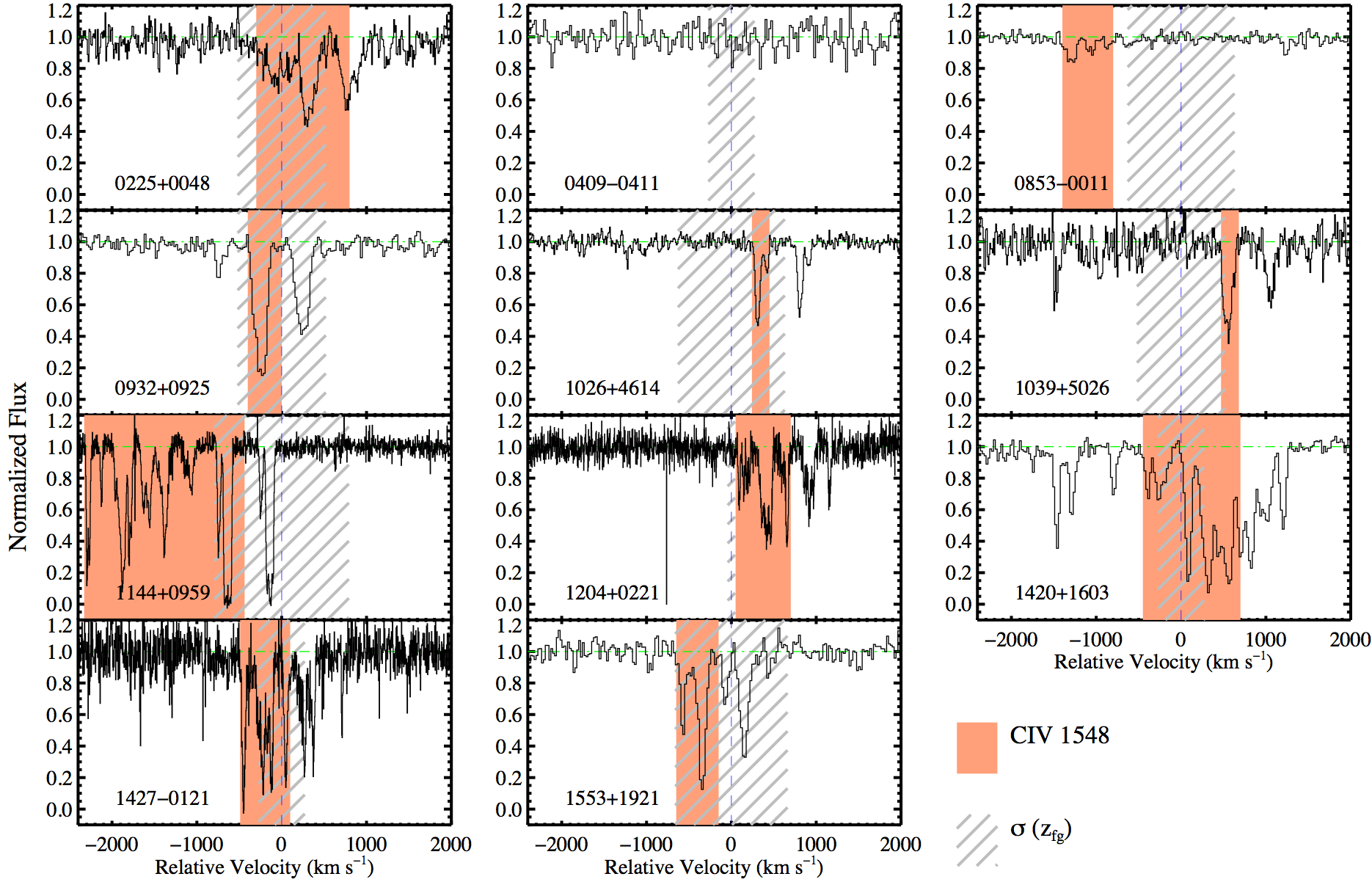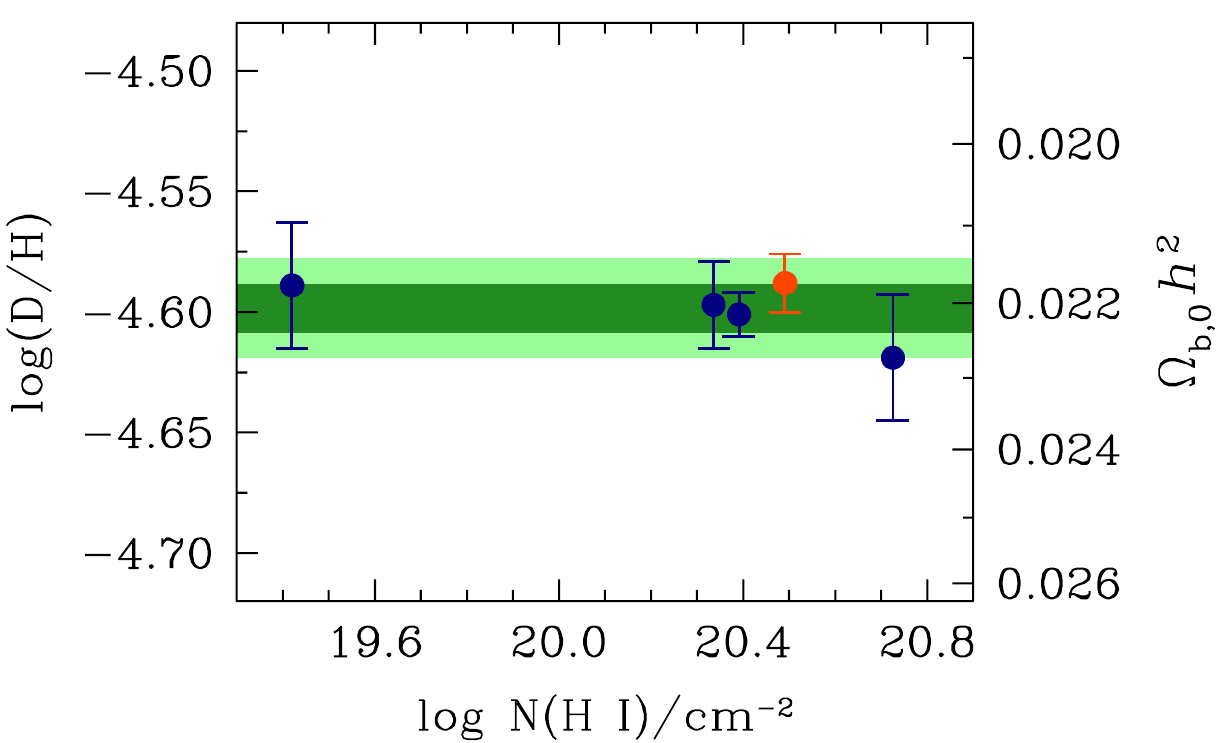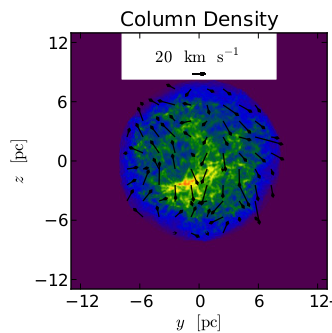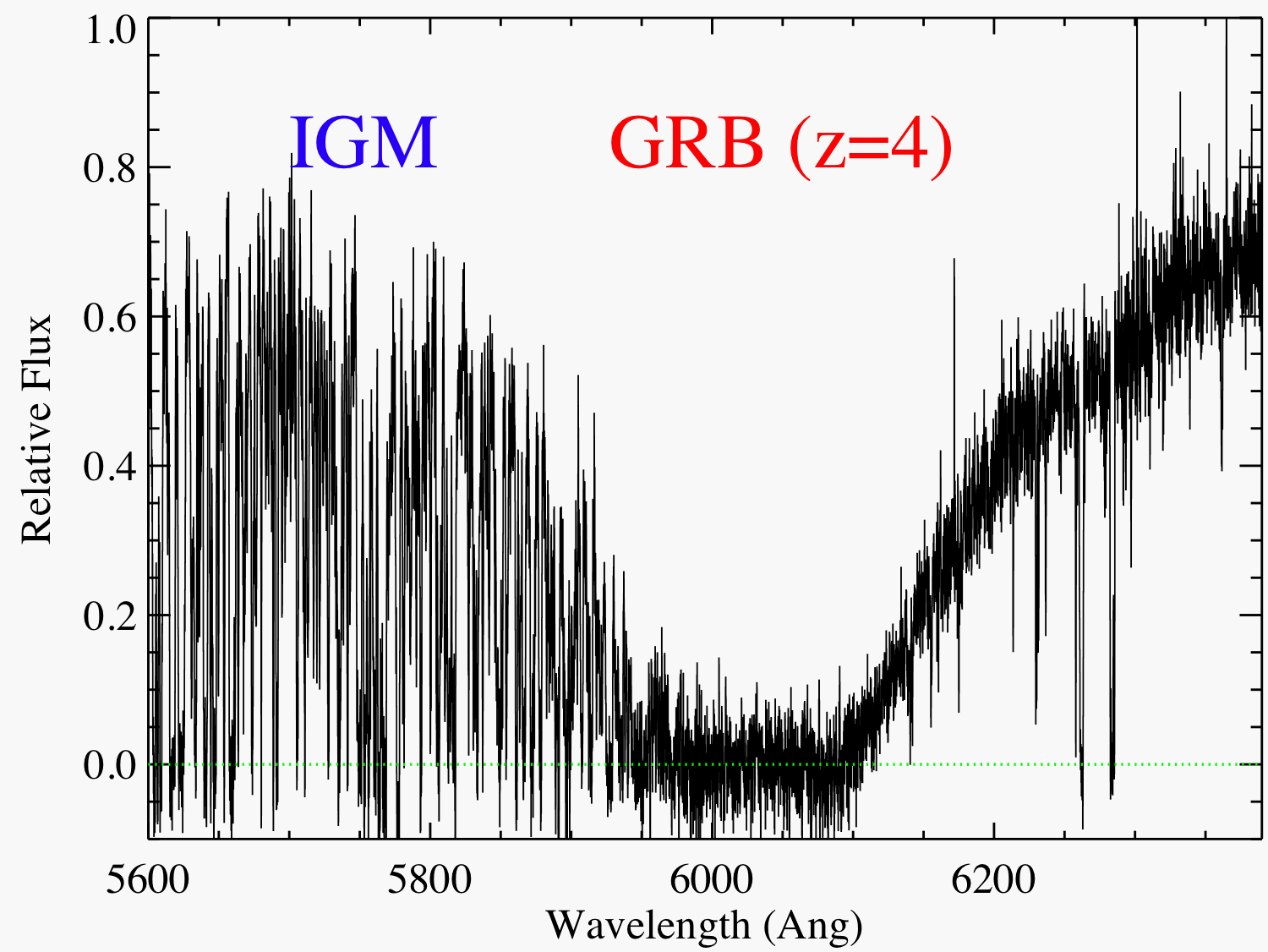Quasars probing quasars (QPQ)
 Galaxies
hosting z~2 quasars are the high-z progenitors
of today’s massive red and dead galaxies. With
close pairs of quasars at different redshifts,
a background quasar can be used to study a
foreground quasar’s halo gas in absorption,
providing information about feedback,
quenching, and the physics of massive galaxy
formation. We have obtained echellete spectra
of bright background quasars in projected
pairs with small angular separations
corresponding to < 300 kpc at the redshift of
the foreground quasars. Most of the systems
reveal optically thick gas (N_HI >= 10^17
cm^-2) coincident with foreground quasar
redshift. We have detected extreme kinematics
with metal absorption lines extending to ~
+1000 km s^-1 relative to z_fg. We have also
found gas with nearly solar
metallicity. Furthermore, there is evidence of
anisotropic or intermittent illumination on
the gas by the the foreground quasars.
Galaxies
hosting z~2 quasars are the high-z progenitors
of today’s massive red and dead galaxies. With
close pairs of quasars at different redshifts,
a background quasar can be used to study a
foreground quasar’s halo gas in absorption,
providing information about feedback,
quenching, and the physics of massive galaxy
formation. We have obtained echellete spectra
of bright background quasars in projected
pairs with small angular separations
corresponding to < 300 kpc at the redshift of
the foreground quasars. Most of the systems
reveal optically thick gas (N_HI >= 10^17
cm^-2) coincident with foreground quasar
redshift. We have detected extreme kinematics
with metal absorption lines extending to ~
+1000 km s^-1 relative to z_fg. We have also
found gas with nearly solar
metallicity. Furthermore, there is evidence of
anisotropic or intermittent illumination on
the gas by the the foreground quasars.
Big Bang Nucleosynthesis
 The primordial
chemistry of the Universe consisted almost entirely of
the lightest elements of the periodic table, including
hydrogen, helium, lithium, and their isotopes. These
primordial nuclides were made just minutes after the
Big Bang, during a period known as Big Bang
Nucleosynthesis. The relative abundances of these
elements offer an intimate view of the physical laws
that were in operation moments after the Big Bang, and
currently provide the most reliable probe of the very
early Universe. To measure the primordial elements,
environments must be found that remain as
uncontaminated as possible since the Big Bang. The IMPS
group studies this primordial chemistry by identifying
neutral clouds of gas that are located, by chance,
along the line-of-sight to a more distant quasar. In
particular, this technique can measure the ratio of
deuterium to hydrogen atoms (D/H); detailed numerical
calculations have shown that (D/H) is very sensitive to
the total amount of visible matter in the present day
Universe.
The primordial
chemistry of the Universe consisted almost entirely of
the lightest elements of the periodic table, including
hydrogen, helium, lithium, and their isotopes. These
primordial nuclides were made just minutes after the
Big Bang, during a period known as Big Bang
Nucleosynthesis. The relative abundances of these
elements offer an intimate view of the physical laws
that were in operation moments after the Big Bang, and
currently provide the most reliable probe of the very
early Universe. To measure the primordial elements,
environments must be found that remain as
uncontaminated as possible since the Big Bang. The IMPS
group studies this primordial chemistry by identifying
neutral clouds of gas that are located, by chance,
along the line-of-sight to a more distant quasar. In
particular, this technique can measure the ratio of
deuterium to hydrogen atoms (D/H); detailed numerical
calculations have shown that (D/H) is very sensitive to
the total amount of visible matter in the present day
Universe.
HALO7D: Galactic Winds
 The HALO7D
survey provides an unprecedented opportunity to make
major advances in the study of galactic wind scaling
relations by providing spectra with adequate
signal-to-noise (S/N) for a large sample of individual
galaxies in CANDELS fields at z~1, as opposed to
stacked spectra of hundreds of galaxies (Weiner et
al. 2009; Rubin et al. 2010; Bordoloi et al. 13). As a
demonstration of the quality of the distant galaxy
spectra from the HALO7D survey, panels a & b show
unsmoothed example spectra of V=22.5 magnitude galaxy
at redshift z=1.35. This galaxy has been observed both
in HALO7D (6 hrs) and DEEP3 (1 hr) surveys. As
expected, the S/N of the HALO7D spectrum is about 2.5
times higher than that of DEEP3 spectrum, and the
low-ionization UV absorption and emission lines of both
Mg II and Fe II are clearly observed. Sine the Mg II
absorption lines are contaminated with emission, a more
reliable but weaker Fe II absorption lines, provide
calibrating references and independent checks for the
Mg II velocity profiles (e.g., Prochaska et
al. 2011). These lines however are vaguely conspicious
in the unsmoothed DEEP3 spectra. Furthermore, the
detectability of strong Mg II and Fe II emission lines
in the example HALO7D spectrum also demonstrates the
potential of our survey to study the spatial exent of
the wind thereby constrain the much sought-after
mass-loading factor, a critical ingredient for all wind
models. Note however that when the DEEP3 spectrum is
smoothed by 6 pixel (Panel c), enough S/N is achieved
to measure the UV absorption lines. Thus indicating
that V ~ 23.5 is reachable with 8 hour exposures and
some smoothing to study individual galaxies in the
HALO7D survey.
The HALO7D
survey provides an unprecedented opportunity to make
major advances in the study of galactic wind scaling
relations by providing spectra with adequate
signal-to-noise (S/N) for a large sample of individual
galaxies in CANDELS fields at z~1, as opposed to
stacked spectra of hundreds of galaxies (Weiner et
al. 2009; Rubin et al. 2010; Bordoloi et al. 13). As a
demonstration of the quality of the distant galaxy
spectra from the HALO7D survey, panels a & b show
unsmoothed example spectra of V=22.5 magnitude galaxy
at redshift z=1.35. This galaxy has been observed both
in HALO7D (6 hrs) and DEEP3 (1 hr) surveys. As
expected, the S/N of the HALO7D spectrum is about 2.5
times higher than that of DEEP3 spectrum, and the
low-ionization UV absorption and emission lines of both
Mg II and Fe II are clearly observed. Sine the Mg II
absorption lines are contaminated with emission, a more
reliable but weaker Fe II absorption lines, provide
calibrating references and independent checks for the
Mg II velocity profiles (e.g., Prochaska et
al. 2011). These lines however are vaguely conspicious
in the unsmoothed DEEP3 spectra. Furthermore, the
detectability of strong Mg II and Fe II emission lines
in the example HALO7D spectrum also demonstrates the
potential of our survey to study the spatial exent of
the wind thereby constrain the much sought-after
mass-loading factor, a critical ingredient for all wind
models. Note however that when the DEEP3 spectrum is
smoothed by 6 pixel (Panel c), enough S/N is achieved
to measure the UV absorption lines. Thus indicating
that V ~ 23.5 is reachable with 8 hour exposures and
some smoothing to study individual galaxies in the
HALO7D survey.
Stellar Feedback
 This
figure shows a snapshot of the early collapse of
a 10^6 M_\odot turbulent cloud in the process of
forming stars. The column density is shown by
the color gradients and velocity distribution is
shown by the arrows. The stars will form in the
densest regions and the radiation emitted by
these stars will heat up the surrounding
gas. This effect of stellar feedback can
potentially inhibit subsequent star formation
and may also cause mass to be ejected from the
natal cloud.
This
figure shows a snapshot of the early collapse of
a 10^6 M_\odot turbulent cloud in the process of
forming stars. The column density is shown by
the color gradients and velocity distribution is
shown by the arrows. The stars will form in the
densest regions and the radiation emitted by
these stars will heat up the surrounding
gas. This effect of stellar feedback can
potentially inhibit subsequent star formation
and may also cause mass to be ejected from the
natal cloud.
Enrichment of the ISM: Stellar Mass Loss
 White dwarf
imaging and spectroscopy in star clusters
reveals the total integrated mass loss that
stars suffer through post-main sequence
evolution. The initial-to-final mass relation
therefore represents a powerful input to
chemical evolution models of galaxies (including
enrichment of the interstellar medium) and
therefore enhances our understanding of star
formation efficiencies in these systems.
White dwarf
imaging and spectroscopy in star clusters
reveals the total integrated mass loss that
stars suffer through post-main sequence
evolution. The initial-to-final mass relation
therefore represents a powerful input to
chemical evolution models of galaxies (including
enrichment of the interstellar medium) and
therefore enhances our understanding of star
formation efficiencies in these systems.